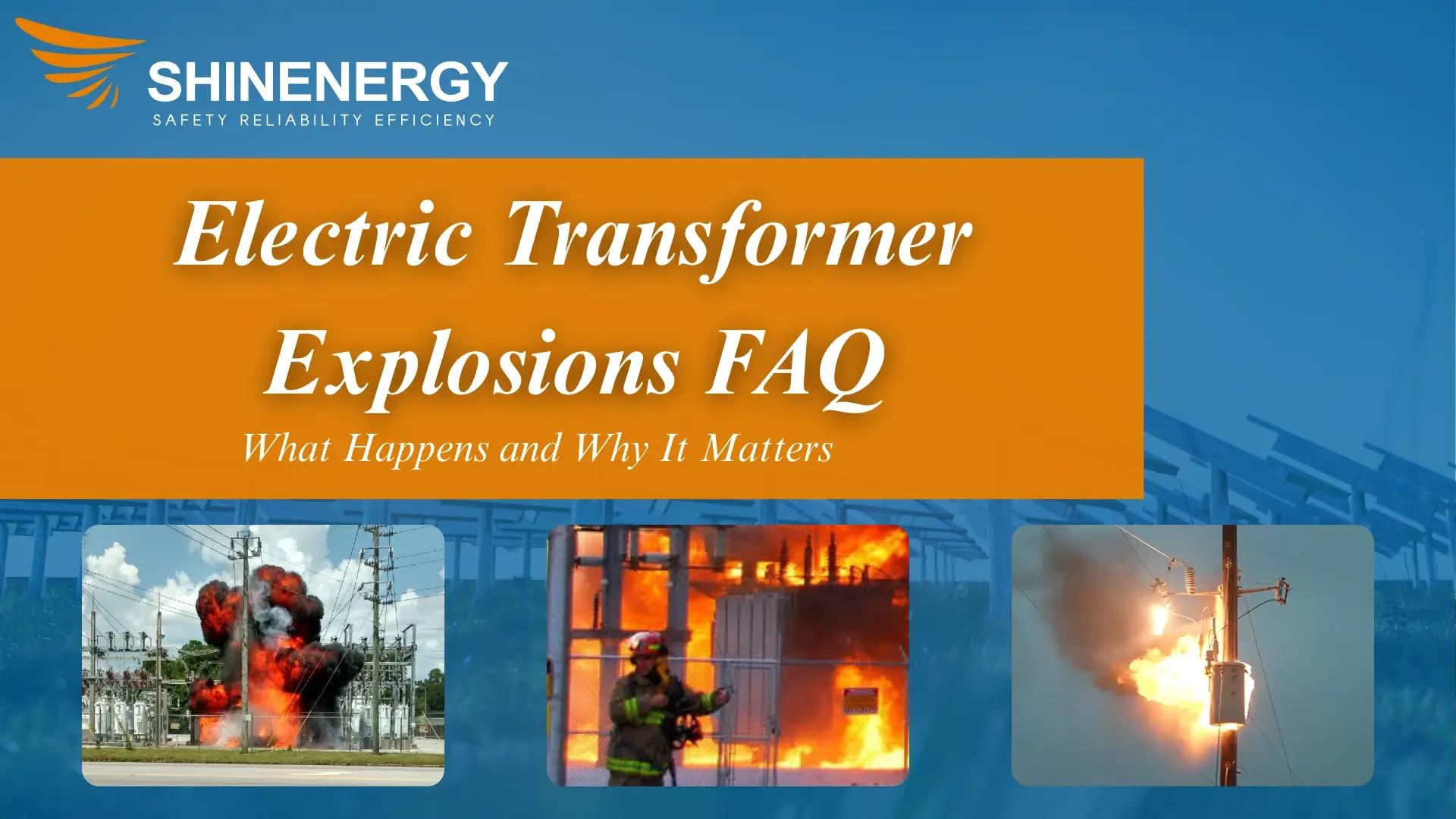
When a transformer explodes, it’s not just a technical failure—it’s a serious safety hazard. From sudden blackouts to equipment fires, the impact is fast and far-reaching. This guide answers the most common questions around Electric Transformer Explosions, helping you understand what happens, why it happens, and how to prevent it. Whether you’re managing utility assets or reviewing your site’s protection systems, this is where you start.
What Happens If a Transformer Blows?
A transformer doesn’t just stop working when it blows—it fails suddenly and violently. Expect a loud bang, a flash of light, and in some cases, smoke or fire. So what happens if a transformer blows?
- The internal insulation breaks down.
- Arcing occurs between windings or core and casing.
- A surge of pressure builds up.
- Oil (in liquid-filled types) may ignite.
- Protection systems trip to isolate the fault.
This chain reaction shuts down connected circuits instantly. In urban substations, Electric Transformer Explosions may cause blackouts. In industrial settings, it can damage nearby equipment.
People often search for electrical transformer explosion video clips online, because the visual and audio impact is massive. The Electric Transformer Explosions are loud, bright, and dangerous. Even an electrical transformer box explosion can rupture nearby wiring and spark fires.
What Causes an Electric Transformer Explosion?
An electric transformer explosion happens when internal faults go unmanaged. Common causes include:
- Overvoltage or grid surge
- Thermal overload
- Flashover due to poor insulation
- Moisture ingress in dry-type transformers
- External short circuits
In dry transformers, resin cracks and arcs form inside the winding. In oil-filled units, gases accumulate and pressure causes tank rupture. Whether it’s called an electrical transformer explosion or an electricity transformer explosion, the mechanism is the same—stress buildup beyond structural limits.
What Does an Exploding Electrical Transformer Look Like?
A typical exploding electrical transformer event includes:
- A loud popping or gunshot-like sound
- Blue-white flash of plasma arc
- Smoke rising from vents or tank seams
- Often followed by flickering or total power loss nearby
In outdoor settings, the explosion may throw fragments. Fire services may need to secure the site. The term “transformers exploding” in the news often refers to these dramatic failures. A transformer electrical explosion is violent, immediate, and may disrupt several downstream systems.
What Is a Green Tank Transformer and Can It Explode?
A green tank transformer refers to a standard oil-immersed power transformer, typically painted green for outdoor camouflage or branding.
These units are robust but can still explode if:
- Breather system clogs, raising internal pressure
- Surge arresters fail
- Thermal relay or Buchholz relay is bypassed or delayed
Proper maintenance and protection design are critical.
What Is a Current Transformer Explosion?
A current transformer explosion is less common but more dangerous. CTs handle high currents at very low voltage. If secondary wiring opens during load, the CT tries to maintain current—causing core saturation, rapid heating, and insulation failure.
Explosion in CTs often damages switchgear or relay panels. Always short CT secondaries before disconnecting. Always ground them properly.
Why Do Transformers Blow Up in Clusters?
News reports often show transformers blowing up one after another. This happens because:
- One failure creates a voltage spike across the system
- Surges travel through distribution feeders
- Multiple weak points trigger successively
- Poor protection grading fails to isolate the zone
In grid-level faults, transformers crashing in series can damage hundreds of meters of cable. A transformer electricity explosion on a pole can take out nearby lines and cause a cascade.
One of the most common public incidents is an electrical pole transformer explosion, where outdoor distribution units blow up due to weather, aging, or wildlife contact.
Shinenergy’s Safety-by-Design Approach
Shinenergy builds for resilience.
- Pressure relief devices react within 10 ms to internal arc buildup
- Thermal sensors monitor winding hot spots in real time
- Silicone-based insulation enhances flame retardance
- Buchholz relay and gas relays protect oil-immersed types from explosion
For dry-type, we use cast resin with self-extinguishing rating and layered epoxy resin for added dielectric margin.
Every Shinenergy transformer passes surge, partial discharge, and short-circuit testing. We simulate the worst so your site doesn’t face it.
Final Summary
An explosion of transformer is loud, dangerous, and avoidable. You asked:
- What happens if an Electric Transformer Explosions ? = Arcing, pressure, shutdown
- What causes transformers to blow up? = Overstress without proper mitigation
- Can a green tank transformer explode? = Yes, if protective layers fail
- What is an electrical transformer explosion? = A failure event triggered by electrical, thermal, or mechanical stress
That’s why we build for real-life worst-case scenarios.

